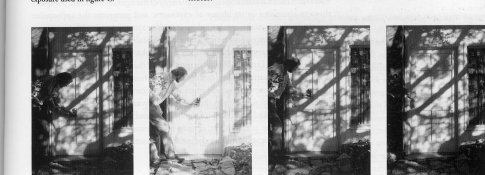Using an incident meter to determine low-luminance placement has always been a step or two too many for me. When I shoot roll film (rarely these days) I like to use my in-camera meter if I have one. If not, I carry the spot meter. If you only have the incident meter, then do some reading up and learn how to use it to find a usable reading in your situation.
In any case, there are several approaches you can take to applying the Zone System to roll film. I find that carrying separate camera bodies or film backs is a hassle and slows me down, thus defeating the whole purpose of smaller cameras. I advocate not trying to develop to different contrasts for roll film, but rather to standardize development and use different paper grades to adjust contrast.
The trick for metering then, is making sure you have adequate exposure for the shadows. With a spot meter, directly reading a shadow luminance is no problem. Place, shoot, develop to your standard and deal with the contrast in the darkroom (that said, I find that it's easier to standardize to a bit lower contrast and then increase it in the darkroom. My roll-film negative "normal" is tailored for grade 3).
With an averaging meter/in-camera meter, you can shoot without worry for most scenes once you have determined a personal E.I. The only pitfall here is a high-contrast scenario. In this case, an averaging meter will dump the shadows. Therefore, (counter-intuitively) one has to give contrasty scenes more exposure when using an averaging meter. One stop usually does the trick. If you are in situations that would require an N-3 contraction or more, then 2 stops, or just forget it and get out the big camera

In any case, if your "normal" development leaves enough latitude for over-exposure, then printing on a lower grade paper takes care of the extra contrast. Most modern films hold detail well into Zone X or XI.
Incident metering presents another bit of complexity due to the nature of the meter. If the light is even from one source, simply use it as an averaging meter. However, in real life, such an evenly-lit scene is rare. For scenes with both lit and shaded areas, you need to use the meter to determine either a shadow placement or an average value. Reading in the shade and then placing the shadows by over-exposing two stops from the meter reading will ensure adequate shadow detail, but may be overexposed, since the shadow you are exposing for (two stops down from "middle gray" in the shade) may not be that important... Reading in shade and light and splitting the difference will get you a fairly good average reading, but may dump the shadows some in really contrasty situations. Determining luminance range using BTZS is accurate, but time-consuming and, IMHO, overkill for roll-film and small cameras (again, defeating the purpose).
So, assess your needs and available equipment and pick a method. If you only have the incident meter, learn to use it with the best method for your situation. If you have a spot meter and the time to use it to place shadows, I would do that (simpler than the incident meter for me, and I can check the rest of the scene easily and make a note about what paper grade might be suitable). If you're shooting from the hip in rapidly-changing conditions, use the in-camera meter if you've got one.
Hope this helps,
Doremus
www.DoremusScudder.com


 In any case, if your "normal" development leaves enough latitude for over-exposure, then printing on a lower grade paper takes care of the extra contrast. Most modern films hold detail well into Zone X or XI.
In any case, if your "normal" development leaves enough latitude for over-exposure, then printing on a lower grade paper takes care of the extra contrast. Most modern films hold detail well into Zone X or XI. 
